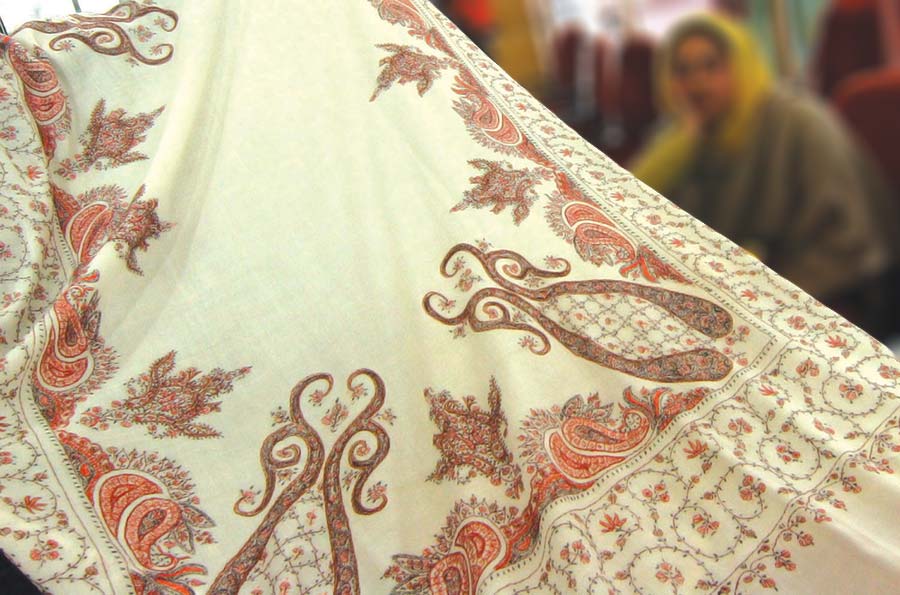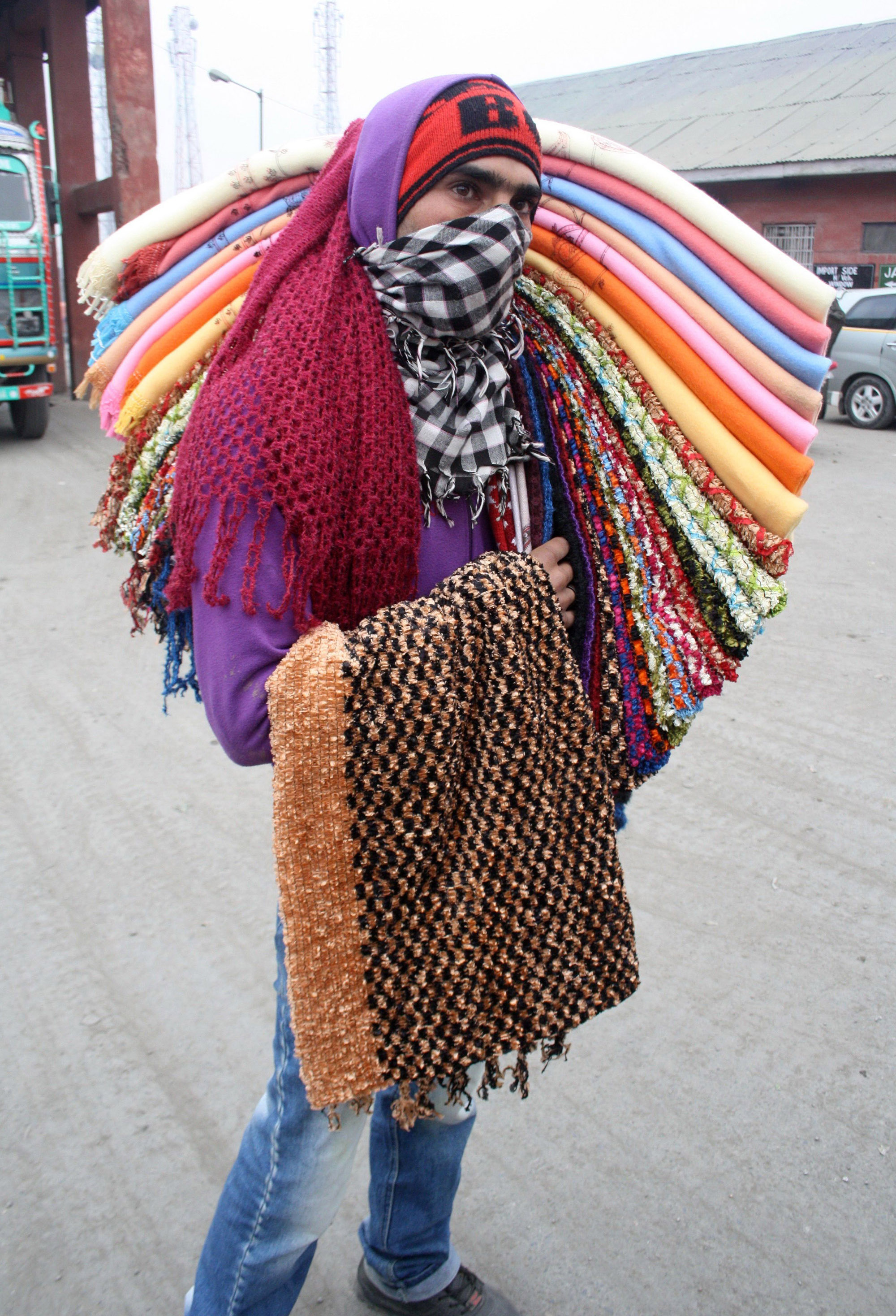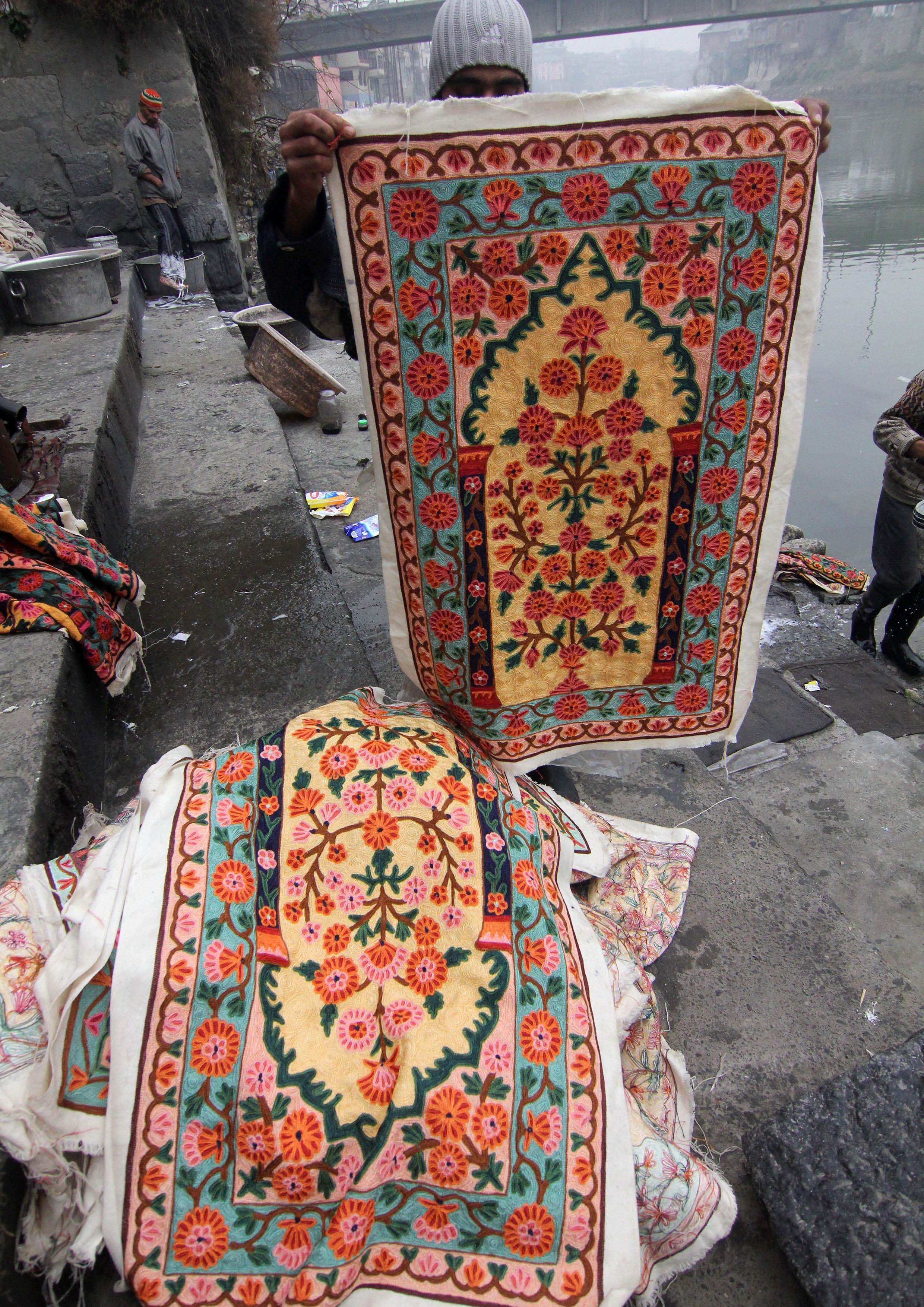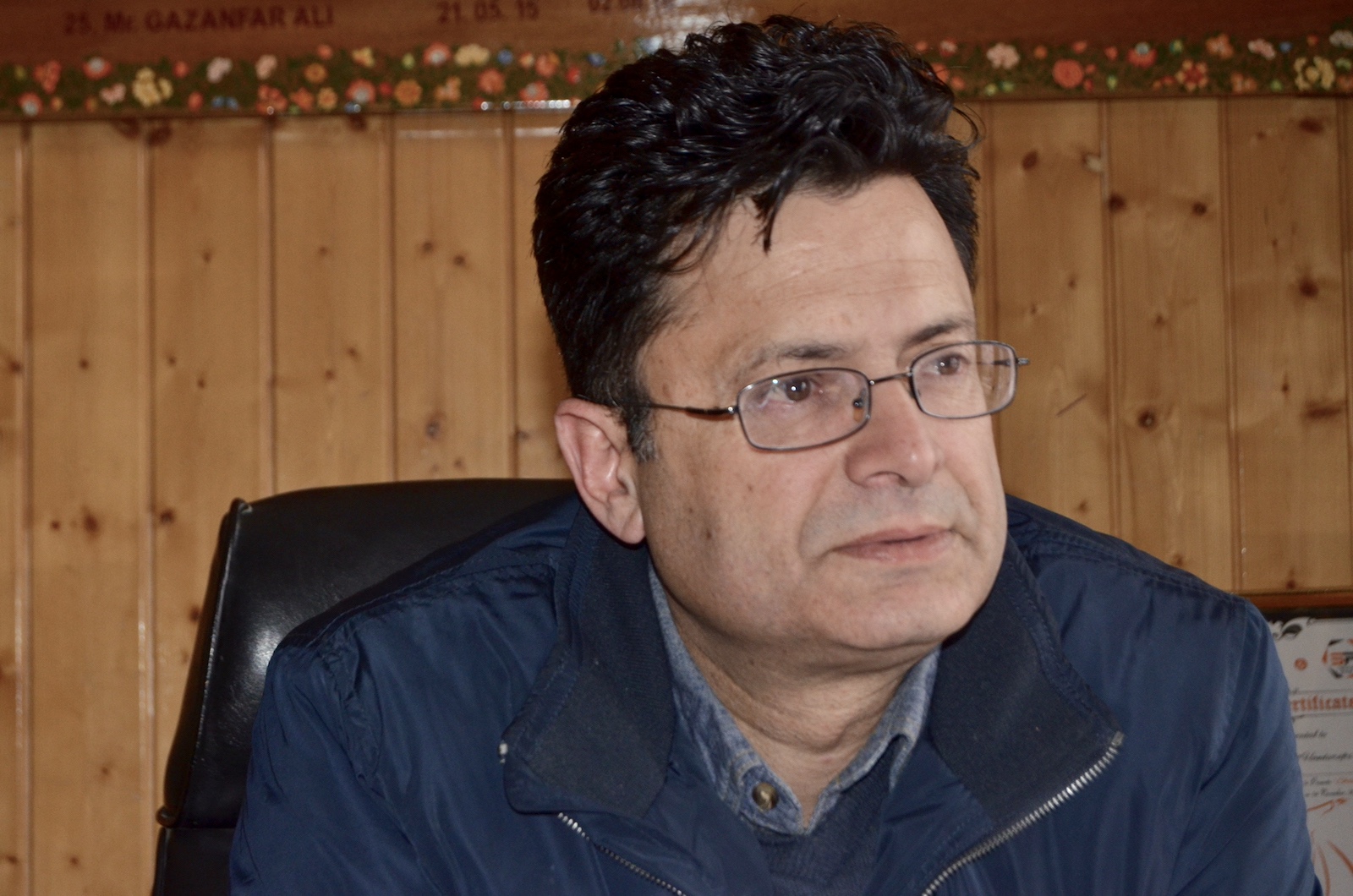Covid19 enforced immobility hit Kashmir handicrafts so hard that the exports fell to the lowest in recent years. Now, the authorities say they have launched a new policy that will address critical issues in the sector and halt the artisan exodus, reports Sarmad Dev

Historically, Kashmir’s famed handicrafts and handlooms have been feeding about 250 thousand artisans. With the Covid19 pandemic and coinciding since 2019, it is witnessing a downslide. Against Rs 369.8 crore exports in 2016-2017, the exports, according to official sources have fallen to Rs 299 crore in 2019-2020.
Handicrafts have always remained a key income in Kashmir’s urban eco-system and it is reflecting in the market and the job opportunities. Now Kashmir’s unemployment rate is at the historic high of 17.08 per cent.
A Dwindling Trend
Research conducted by two IUST professors Prospects and Challenges of Handicraft Industry in Kashmir in 2020 reported that in the last five years, the export of Jammu and Kashmir had contributed Rs 1000 to Rs 1500 crore to the GDP of Jammu and Kashmir, a year. In 2018-19, however, the exports were at Rs 917.66 crore, a reasonably low figure.
The research highlighted the challenges faced by the industry including high pricing, lack of innovation, un-organised sectors for the proper functioning of labour-intensive works, unskilled labours, reduced profits, limited financial literacy, no direct approach to markets, lack of authentic material and abundance of fake ones, no help from the Government, the impact of militancy and armed Kashmir, no tourism and worst of all post-2019 conditions and Covid-19.
Blocked Inventory
Given the slump globally and within India, the sales have gone massively down. The traders had invested a lot of amount in managing their inventory and the entire amount is stuck up.

PHOTO BY BILAL BAHADUR
“It could be anywhere between Rs 700 crore to Rs 1200 crore that is blocked in the inventory,” one exporter estimated. “Since this huge amount is blocked, we are neither in a position to manage our bank accounts nor do we have any surplus that could go to the artisans as a result of which there is a lot of joblessness in the sector.”
The other major issue that the exporters face is that the stock they have with them is gradually phasing out of fashion. This could be a major loss eventually, they insist.

PHOTO BY BILAL BAHADUR
Manufacturing Issues
“We used to get the raw material from Laddakh and mostly women used to do hand weaving, generating income for them, but now the raw material goes directly to Amritsar where machines work on it,” Manzoor Ahmad Beigh, a veteran weaver from Nowshera, said. “The problem started even before the turmoil in Srinagar happened in 2019. This has created a situation that weavers lack the traditional raw material and it is impacting the product.”
“The main reason the handicraft business is declining is that the costly authentic handicrafts are outwitted by the cheap machine-made products,” Firdaus Malik, the promoter of Bangaluru based Karnataka Emporium, said. “Retailers in Delhi get Amritsari shawls which are sold as Kashmiri Pashmina because they are cheap and more appealing to the tourists. A tourist would buy six or ten shawls because they are cheaper and they don’t recognise the authenticity of the real ones.”
This trend in the mass market has even forced the retailers to sell Nepali, Amritsari, Irani, and Turkish handicrafts as they have low price tags.
“Machine has impacted seriously because the buyer wants cheap products,” said Javid Saleem Mir of Miracle Cottage Industrial Enterprise. “Covid did affect the sales as the interstate travel as well as the international travel was banned.”
This situation has made the artisans the principal victims of the prevailing market conditions. “Artisans are the ones most affected by it,” Tahir Ahmad Bazaz who runs the Indian Artisans, a handicraft and handloom outlet, said. “Kashmir society has also started looking at the artisans very differently and this has resulted in an exodus of masters artisans from the handicraft sector.”
This is happening at a time when a major sector of the trade and the relevant government departments are keen to revive authentic handicrafts. The revival of the Craft Development Institute (CDI) and the use of geographical indication (GI) are clear pointers towards a revival idea. Though a section of the traders and artisans have started visiting CDI, they complain that additional machines need to be deployed for a quick certification process.
Director Speaks
Mahmood Ahmad Shah, Director Handicrafts and Handlooms Kashmir is a person who knows the handicrafts inside out. Before becoming an officer, he was in the sector for many years.
“It’s a fact that the exports have gone down since 2019-2021,” Mehmood said. “The key reasons include the global recession, the pandemic and sluggish economic growth. Aside from that, we haven’t been able to hold exhibitions and fairs, which are also contributing to the crisis the sector is in.”

Admitting that misbranding is a crisis, Mehmood said it has been there since 1819 when the machine made Paisley Shawl came into being. “Now it’s not only happening in Amritsar but in Kashmir as well and people from Kashmir are misbranding and selling it also,” Mehmood said. “In order to check this misbranding, we introduced GI tagging system in 2008. The Kashmiri Pashmina GI has the sole purpose to check the authenticity of these handicrafts. The main attributes to check the authenticity was to see if the product was hand-woven and hand-spun.”
Mehmood said that the Government established the Pashmina Quality Testing Control Certification Centre laboratory in which the artisans have to personally certify that the product is credible. Subsequently, the products undergo the test and based on the parameters of the fibre, the product is GI tagged.
At the same time, the Director said that they have launched a campaign to help buyers understand how to distinguish authentic from fake products. “I cannot stop people from selling Amritsari shawls but through the GI tags we are trying to show people that the real Pashmina can only be made in Kashmir.”
Since 2008, the CDI has GI tagged about 4500 handicrafts up to February 2021. “Right now, almost 500 products are being GI-tagged a month,” Mehmood said. “There is so much of demand for certificates of authenticity that the department has now started seeking help from SKAUST, which also owns the testing machines.”
Mehmood said that facilities are gradually being improved. “Till recently, we lacked hallmark facility for gold or silver. Now we have it. In handicrafts, we have GI tagging, a facility that was not around till recently.”
Admitting the exodus from the handicrafts sector, Director Mehmood said there are issues in the sector.
“The younger generation is not interested in handicrafts because of lower wages and lack of dignity,” Mehmood said. “In order to tackle this issue, we have launched a campaign to glorify our artists, and for the first time in history, we have set up MSP (Minimum Support Price) for shawls and carpets under the Handicraft and Handloom Policy 2020.”
Under the policy, the wages have been enhanced and the good artisans are being awarded for their contributions. “Since 2015, no award money was disbursed to the artisans and this year we released about Rs 18 lakh rupees for these years.”
Off late, the Department is inviting people to register and pick up the art and get Ra 2000, a month, till they master it.













